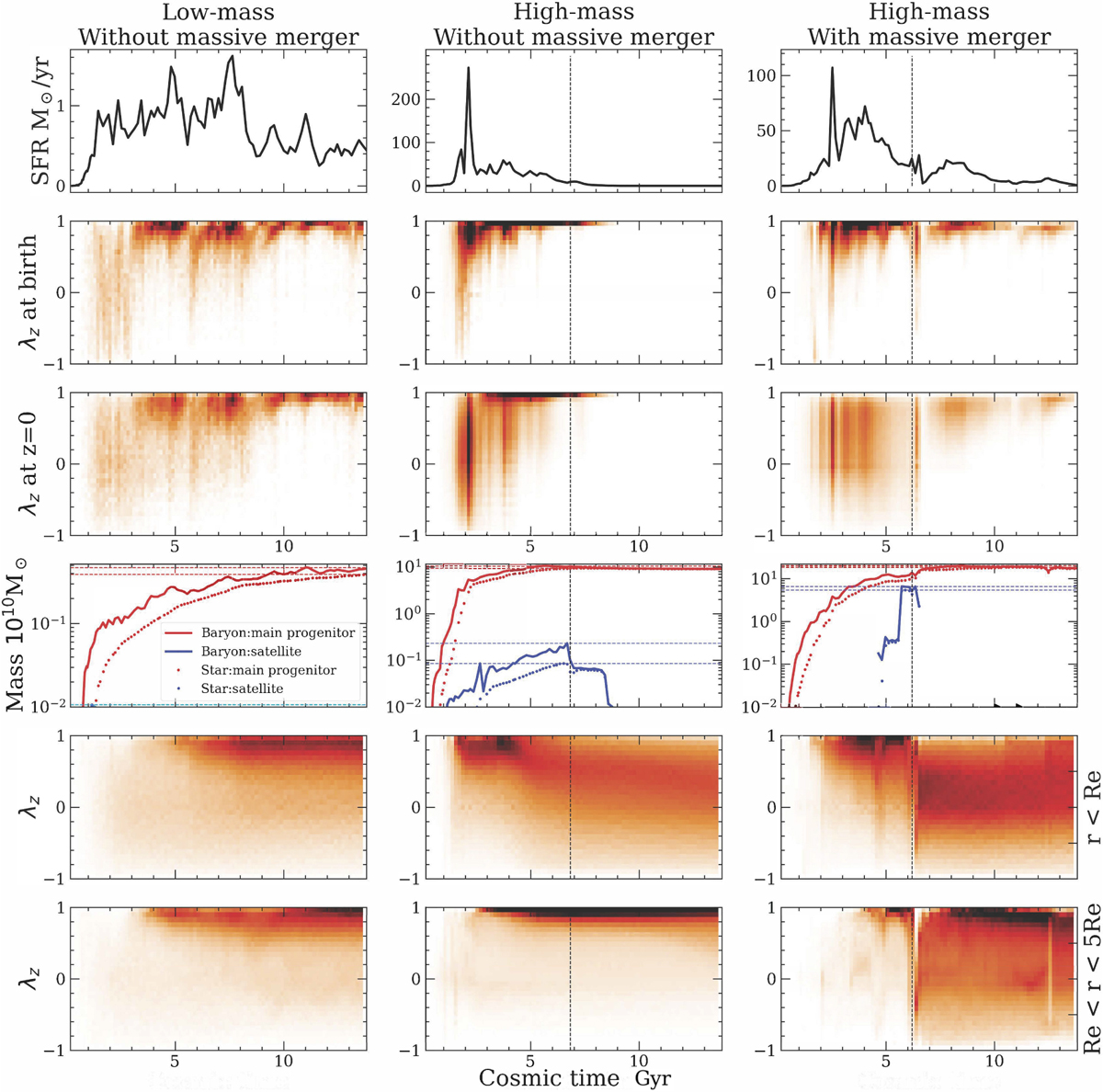Fig. 7

Download original image
Three typical cases of galaxy structure evolution. For each galaxy, we present the star formation history and its kinematics in the top three rows: (1) star formation history: the star formation rate as a function of cosmic time; (2) the birth circularity distribution within 5Re for stars forming at different cosmic epochs; (3) the present day (z = 0) circularity distribution within 5Re for stars born at different cosmic epochs. In the subsequent three rows, we show the mass assembly history of the main progenitor; (4) the red solid and dotted curves represent the baryonic and stellar mass evolution of the main progenitor over cosmic time, and the blue lines represent those of secondary galaxies that merged with the main progenitor. The vertical dashed lines indicate the time of mergers, if any; (5) circularity distribution of stars at r < Re of the main progenitor at different cosmic epochs; (6) circularity distribution of stars at Re < r < 5Re of the main progenitor. Left: in the left panel, we show a low-mass galaxy (M* = 109.76 M⊙) that has not experienced any major mergers. Stars in this galaxy form in a relatively warm state, and their circularity distribution at birth remains largely unchanged until the present day. There is no significant change in the stellar circularity distribution in the main progenitor over time. Middle: in the middle panel, we show a high-mass galaxy (M* = 1011.12 M⊙) that also lacks major mergers, with the most significant merger having a mass ratio M*,sat/M*,main,z=0 ≤ 0.01). The majority of stars in this galaxy are born in a dynamically cold state. However, stars born during the star formation peak at t ~ 2 Gyr and become dynamically warm/hot by z = 0. The circularity distribution of stars in the main progenitor within r < Re gradually transitions from dynamically cold to dynamically hot, while the stars at Re < r < 5Re remain dynamically cold. Right: in the right panel, we show a high-mass galaxy (M* = 1011.41 M⊙) that experienced a major merger with (M*,sat/M*,main,z=0 ~ 0.2). Most stars in this galaxy are born in a cold state, and stars born before the merger event are warm/hot at z = 0. The circularity distribution of stars in the main progenitor, both in the central and outer regions, has undergone dramatic changes due to the merger.
Current usage metrics show cumulative count of Article Views (full-text article views including HTML views, PDF and ePub downloads, according to the available data) and Abstracts Views on Vision4Press platform.
Data correspond to usage on the plateform after 2015. The current usage metrics is available 48-96 hours after online publication and is updated daily on week days.
Initial download of the metrics may take a while.


